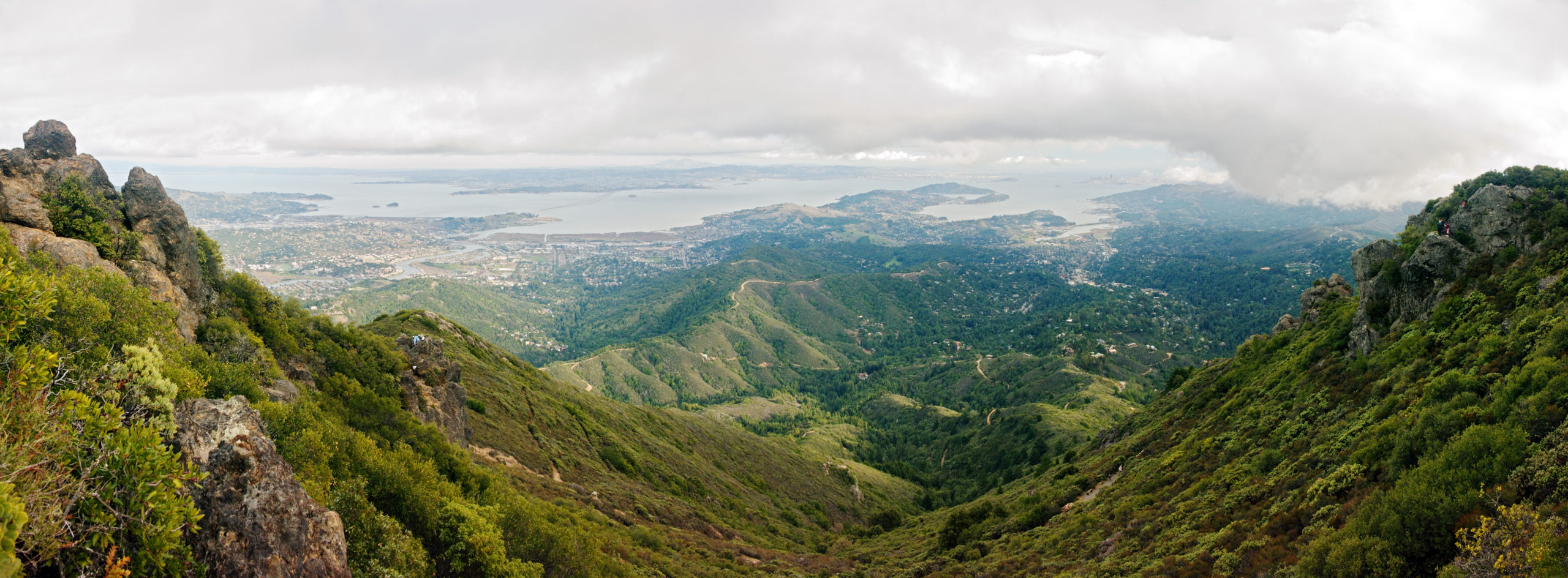Contact Marin Environmental History
We'd love to hear from you, please use this Contact form to reach us by email.
We'd love to hear from you, please use this Contact form to reach us by email.
A New Book by John Hart
A New Book by John Hart

The organization will be chronological, beginning with the distinctive natural setting (itself in an evolving, not a timelessly “pristine” state) and the era before European colonization. Each of about a dozen chapters will treat a specific period. After 1930, the rhythm will be by decade.
Each chapter will begin with a lively discussion of its period, picking out major developments. Each will contain several profiles of key actors. Further detail will be provided under a repeated series of headings (wherever relevant). At present I see eleven of these:
The people
The land use pattern
The urban imprint
Agriculture and aquaculture
Biota including forests, prairie, wildlife, exotics
Bays
Creeks
Parks
Resource consumption and disposal
Air and water quality
Marin in its region (and beyond)
The first and last of these headings, especially, invite discussion of environmental justice concerns. Without loosening the focus so much as to make this a general history, there will be room to discuss the past and present of the Miwoks, the Chinese fishing villages, the influx from Italian Switzerland and the Portuguese Azores, the World War II labor force, post-War ghettoization of Blacks, and the Latinx community today.
More fundamentally, it will discuss the place Marin has come to occupy in the regional—and even larger—contexts. In what ways do Marin’s small population, high housing prices, and elite image relate to its environmental policies?
A closing chapter will sketch the challenges ahead as the county faces problems of worldwide scope, including sea level rise, increased risk of stream flooding, drought, and fire, and the seemingly unstoppable spread of exotic species that add to ecosystem stress.
There will be extensive notes and a comprehensive bibliography.
The bones of the story: Geology and geography
Marin’s corner of California
Its biotic richness in context
The real wilderness: Marin before people
The aboriginal scene
The scale and nature of Coast Miwok landscape management: What is and isn’t known
The vanished megafauna debate
Settlement patterns determined by food sources
The advance guard of invasion: European diseases and species
Missions and land grants
The Coast Miwoks’ serial dispossession
Annexation and genocide: the American era
Settlement patterns determined by water transportation
The odd delineation of a county
The Army acquires the Golden Gate
The original cowtown: Growth and dominance of the dairy industry
Settlement patterns determined by ferries and railroads
The fall of the big redwoods
Green hills to yellow: the transition to annual grasses
Local species extinctions
Erosion and sedimentation
Tourism on Mount Tamalpais
Earthquake and the beginning of suburbia
William Kent’s mountain: Muir Woods, Mount Tamalpais State Park, Marin Municipal Water District
First interest in Point Reyes parks
The twilight of the railroads
The Golden Gate Bridge
Caroline Livermore and friends: the Marin Conservation League
When an airport was wanted: the campaign for Hamilton Field
First stirrings of county planning
A parkway over Mount Tamalpais?
The unique billboard ban
The first federal Point Reyes plan
Marin in wartime
Marinship and Marin City
A Tennessee Valley canal?
Black workers and white discrimination
Samuel Taylor State Park
Missed opportunity at Stinson Beach
From tenants to owners on Point Reyes
Suburbia rampant
Segregationist policies
New dams
Filling the Bay
The Civic Center skirmishes
Formation of the Marin Audubon Society
One corner of the Bay preserved: Richardson Bay
Tomales Bay State Park
Revival of Point Reyes idea
Suburbia rampant
From creeks to ditches: wholesale channelizations
The Save the Bay movement
The Bay Conservation and Development Commission
The race to Save Our Seashore
The West Marin Master Plan
Marin’s share in the Freeway Revolt
Audubon’s coup at Bolinas Lagoon
Marincello
The Great Oil Spill of 1971
The startling turn: a planning revolution
Revival of public transportation; ferries
Water supply and the growth debate
Recycling begins
Giacomini Ranch diking refused
A local tidelands case with statewide impact: Marks vs. Whitney
Completing the greenbelt: the Golden Gate National Recreation Area
Wilderness at Point Reyes
Is agriculture doomed? The coming of A-60
The Coastal Act
China Camp State Park
The 1976-77 drought
Farm support measures
The Marin Agricultural Land Trust
Reintroduction of tule elk
Proposition 13
Consolidating a fragile new vision
The Marin Agricultural Land Trust finds its feet
Agricultural leasing on Point Reyes; Range Management Plan
The closure of Hamilton Field
New focus on Bay shore and wetlands
The Habitat Goals report
Baylands acquisitions
The Hamilton Field battle
New focus on San Geronimo salmon; SPAWN
Strains in the agricultural/urban alliance
Proposed Seashore Protection Act/Farmland Protection Act
Norovirus in oysters: Whose pollution?
Tomales Bay Shellfish Advisory Committee, Tomales Bay Watershed Council
Mount Vision Fire
The Elk Management Plan
Sonoma-Marin Area Rail Transit
Marin Baylands National Wildlife Refuge proposal
Corte Madera Creek flooding and plans to counter it
The transition to organic agriculture
Ruptures in the farmer-environmentalist alliance
Oyster controversy building
Wetland restorations east and west
The Marin Carbon Project
Marin Clean Energy
Measure A (Marin) and Measure AA (regional)
Housing and the pressure to densify; Plan Bay Area
The Corte Madera Creek debates
Visions in collision at Point Reyes
Awareness of impending sea-level rise
Growing wildfire risk
One Tam
Continuing wetland restorations
Carbon farming: Hope or hype?
The covid disruption: Do old assumptions hold?
Organizing to confront sea level rise
Organizing to confront fire danger
Corte Madera Creek: Impasse on flood control
The rising claims of environmental justice
Marin City and the Canal
Who speaks for the Coast Miwoks?
Repurchasing Indian lands
Point Reyes: Dueling visions continued
Refuge for the trees? The Marin Regional Forest Health Strategy